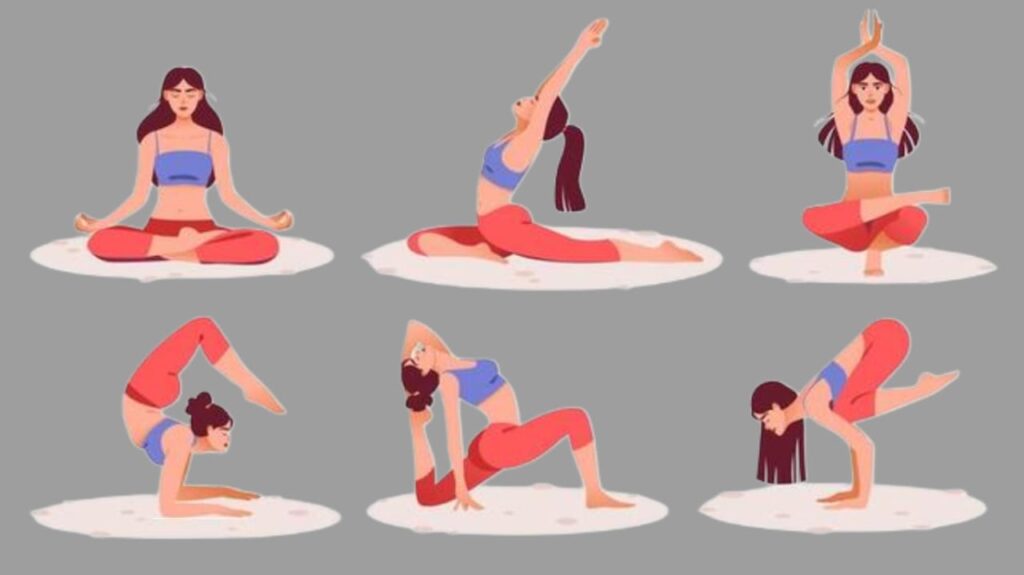
Tossing and turning at night, your mind racing with endless thoughts? You’re not alone. Many people struggle to wind down after a long day, especially with the constant buzz of life and stress. If you find yourself lying awake, unable to relax, consider incorporating yoga into your bedtime routine. Yoga offers a gentle yet effective way to calm your body and mind, making it easier to fall asleep and stay asleep throughout the night.
In this article, we’ll explore five yoga poses that can help you relax and prepare for a restful night. These poses focus on releasing tension, promoting deep breathing, and soothing the nervous system to help you drift off into a peaceful slumber.
The Science Behind Yoga and Sleep
Yoga has long been known for its ability to help reduce stress, improve flexibility, and enhance mental focus. But did you know it can also be a powerful tool for better sleep? When you practice yoga, your body engages in deep stretching and mindfulness, which can help release physical and mental tension. By encouraging a relaxed state, yoga signals to your body that it’s time to wind down, transitioning you from the “fight-or-flight” mode into “rest and digest” mode, which is essential for sleep.
Yoga helps to activate the parasympathetic nervous system (the body’s “rest and digest” mode) by lowering heart rate, reducing cortisol (the stress hormone), and calming the mind. This makes it easier for you to fall asleep, stay asleep, and experience deeper, more restorative sleep.
Yoga’s Impact on Sleep
If you find your mind racing as soon as you lay down, or if you struggle to let go of stress, yoga can help in multiple ways. Focusing on slow, controlled breathing during your practice slows down the heart rate and brings you into a meditative state. By focusing on your breath and stretching the body, you can reduce anxiety, ease physical tension, and calm your mind—perfectly priming you for sleep.
Yoga can also improve sleep quality by targeting common sleep disruptors like muscle tension, tight hips, and anxiety. By incorporating certain poses into your evening routine, you’ll be setting yourself up for a more restful night.
How to Set Up for Your Bedtime Yoga Practice
Before diving into the yoga poses, it’s important to prepare your body and environment for the most relaxing experience possible. Start by creating a peaceful environment. Dim the lights, eliminate distractions, and ensure your room is at a comfortable temperature.
If you are new to yoga, have some props handy to make your practice more comfortable. Yoga blocks, straps, and blankets are great tools for supporting your body in different poses, ensuring you can relax and get the most out of your practice. Don’t worry about achieving perfection; yoga is a practice, and the goal is to enjoy the process of relaxation.
Here are five poses that are especially effective at promoting relaxation and improving your sleep:
1. Balsana (Child’s Pose)
Child’s pose is an excellent starting (and ending) position for your bedtime yoga routine. It’s incredibly soothing for the body and mind and can be particularly helpful if you’ve had a stressful day. This pose helps stretch the lower back, hips, and thighs while also encouraging deep, calming breaths.
How to do Child’s Pose:
- Start on your hands and knees with your wrists aligned under your shoulders and knees under your hips. If you need a deeper stretch, widen your knees.
- Slowly sit back onto your heels, extending your arms out in front of you with your palms facing down. Let your forehead rest gently on the floor.
- Focus on your breath as you lengthen your spine and let your body relax into the floor. Hold for several deep breaths, feeling any tension melt away.
- Tip: Place a yoga block under your forehead for additional comfort if needed.
2. Supta Baddha Konasana (Reclining Bound Angle Pose)
The Reclining Bound Angle Pose is a great way to stretch your inner thighs, hips, and lower back while promoting a sense of calm. This restorative pose encourages deep breathing and relaxation, helping to quiet your mind before bed.
How to do Reclining Bound Angle Pose:
- Lie flat on your back with your knees bent and the soles of your feet together.
- Allow your knees to gently fall out to the sides, resembling a butterfly stretch. Your arms can be extended by your sides, palms facing up or down.
- Focus on your breath and let your body release the tension of the day.
- Tip: If you feel tightness in your inner thighs, you can place blocks under your knees for added support. Hold for 2-5 minutes.
3. Supta Kapotasana (Reclined Pigeon Pose)
Reclined Pigeon Pose is a modified version of the traditional pigeon pose and is gentler on the hips and back. It helps relieve tension in the hips, thighs, and lower back—common trouble areas that contribute to difficulty falling asleep.
How to do Reclined Pigeon Pose:
- Lie on your back with your knees bent and feet flat on the floor.
- Cross one ankle over the opposite knee, allowing your knee to open to the side.
- Gently press on the raised knee with your hand to deepen the stretch. For an added stretch, place your hands under the grounded leg and gently pull it towards your chest.
- Focus on your breath as you deepen the stretch, relaxing your hips and lower back.
- Tip: Keep your head and neck relaxed on the floor, and use a block or pillow under your head for extra support.
4. Viparita Karani (Legs-Up-the-Wall Pose)
This pose is a great way to relieve tension in your legs, lower back, and hips. It also promotes blood flow and improves circulation, making it perfect for releasing the physical stress of the day.
How to do Legs-Up-the-Wall Pose:
- Sit with your side against a wall, then gently swing your legs up so that your heels and hamstrings rest against the wall.
- Your arms can rest by your sides, palms facing up, or on your belly for a more soothing effect.
- Hold for at least one minute, focusing on your breathing. You can place a block or bolster under your lower back for extra support.
- Tip: This pose is especially helpful if you’ve been standing or sitting for long periods during the day. It’s a great way to relieve the weight and pressure in your legs.
5. Halasana (Plow Pose)
Plow Pose is a more advanced yoga pose, but it can be incredibly beneficial for calming the nervous system. It stretches the back, shoulders, and legs while offering a mild inversion that helps reduce stress.
How to do Plow Pose:
- Begin lying on your back, legs extended and arms by your sides.
- Slowly lift your legs up over your head, bringing your toes to the ground behind you. Keep your arms extended on the floor for support.
- Hold the pose for 5 breaths, then gently return to lying on your back.
- Tip: If you’re new to this pose, you can use the wall for support as you lift your legs. Be cautious, as this pose can put pressure on the neck.
How Often Should You Practice These Poses?
To experience the benefits of these yoga poses, it’s important to practice consistently. Ideally, aim to incorporate them into your bedtime routine every night. However, it’s important to remember that yoga should never feel like an obligation. If doing yoga every night doesn’t fit into your schedule, aim for 3-5 nights a week. As you begin to experience improved sleep quality, you may decide to extend your practice to 10-15 minutes every night.
Final Tips for a Relaxing Bedtime Yoga Practice
- Breathing: Focus on slow, deep breaths throughout your practice. Inhale deeply through your nose, hold for a moment, and exhale through your mouth. This can help activate the parasympathetic nervous system and relax your body.
- Timing: Try to practice yoga 20-30 minutes before bed to allow your body and mind to fully relax before lying down to sleep.
- Use Props: Don’t hesitate to use yoga blocks, straps, or blankets to support your body in different poses. This will help you relax deeper into the stretch and make your practice more comfortable.
If you’re new to yoga, or these poses are unfamiliar to you, it may be helpful to work with an instructor who can guide you through proper form. Proper alignment will not only make the practice more effective, but it will also help prevent injuries.
Lastly, make sure you’re practicing on a comfortable surface. A good yoga mat provides cushioning and stability, especially if you’re doing poses on a hard floor.
